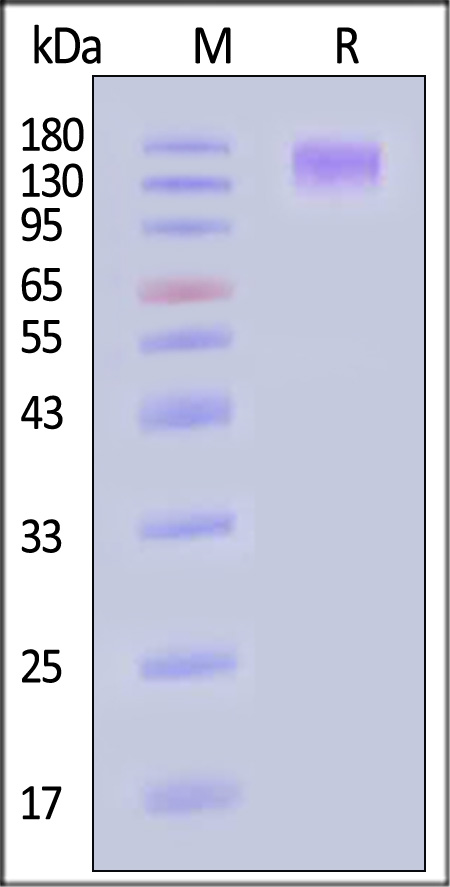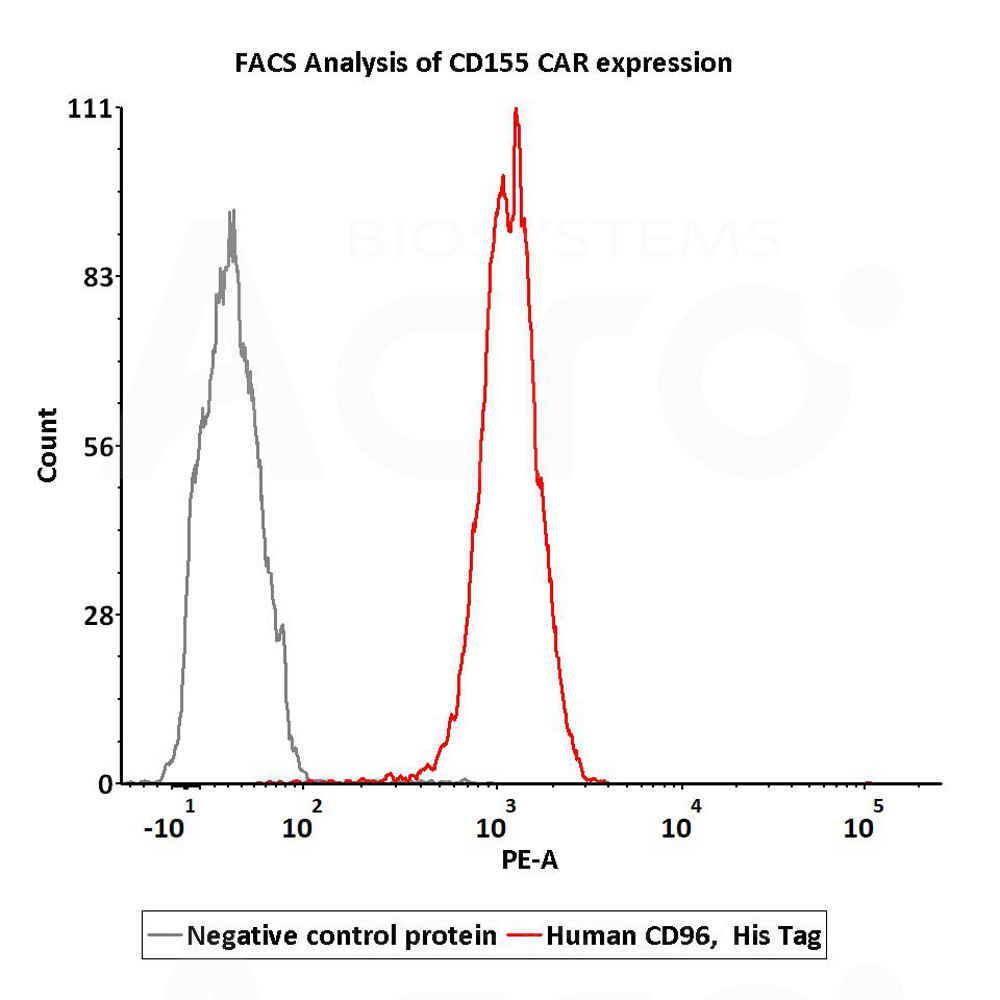 Limited Edition Golden Llama is here! Check out how you can get one.
Limited Edition Golden Llama is here! Check out how you can get one.  Limited Edition Golden Llama is here! Check out how you can get one.
Limited Edition Golden Llama is here! Check out how you can get one.
 Offering SPR-BLI Services - Proteins provided for free!
Offering SPR-BLI Services - Proteins provided for free! Get your ComboX free sample to test now!
Get your ComboX free sample to test now!
 Time Limited Offer: Welcome Gift for New Customers !
Time Limited Offer: Welcome Gift for New Customers !  Shipping Price Reduction for EU Regions
Shipping Price Reduction for EU Regions
| Kat. Nr. | Arten | Produktbeschreibung | Struktur | Reinheit | Merkmal |
|---|---|---|---|---|---|
| TAE-H82E3 | Human | Biotinylated Human CD96 / TACTILE Protein, His,Avitag™ |  |

|
|
| TAE-H52H0 | Human | Human CD96 / TACTILE (C110S) Protein, His Tag (MALS verified) |  |

|
|
| TAE-H5252 | Human | Human CD96 / TACTILE Protein, Mouse IgG2a Fc Tag, low endotoxin |  |

|

FACS analysis of Biotinylated Human CD96, His,Avitag binding to CD155 cells overexpressing CD155.
2e5 of CD155 cells overexpressing CD155 were stained with 100 μL of 1 μg/mL of Biotinylated Human CD96, His,Avitag (Cat. No. TAE-H82E3) and negative control protein respectively, washed and then followed by PE-SA antibody and analyzed with FACS (Routinely tested).

FACS analysis of Human CD96, His Tag binding to CD155 cells overexpressing CD155.
2e5 of CD155 cells overexpressing CD155 were stained with 100 μL of 1 μg/mL of Human CD96 (C110S), His Tag (Cat. No. TAE-H52H0) and negative control protein respectively, washed and then followed by PE anti-His Tag antibody and analyzed with FACS (Routinely tested).

Loaded Human CD155, Fc Tag (Cat. No. CD5-H5251) on Protein A Biosensor, can bind Human CD96 (C110S), His Tag (Cat. No. TAE-H52H0) with an affinity constant of 625 nM as determined in BLI assay (ForteBio Octet Red96e) (Routinely tested).
| Name | Research Code | Research Phase | Company | Indications | Clinical Trials |
|---|---|---|---|---|---|
| AGEN-1777 | AGEN-1777; BMS-986442 | Phase 2 Clinical | Agenus Inc | Solid tumours; Neoplasms; Carcinoma, Non-Small-Cell Lung | Details |
| Nelistotug | GSK-6097608; GSK-608; GSK’608 CD96; GSK’608 | Phase 2 Clinical | Glaxosmithkline Plc | Head and Neck Neoplasms; Neoplasms | Details |
| AGEN-1777 | AGEN-1777; BMS-986442 | Phase 2 Clinical | Agenus Inc | Solid tumours; Neoplasms; Carcinoma, Non-Small-Cell Lung | Details |
| Nelistotug | GSK-6097608; GSK-608; GSK’608 CD96; GSK’608 | Phase 2 Clinical | Glaxosmithkline Plc | Head and Neck Neoplasms; Neoplasms | Details |
This web search service is supported by Google Inc.
